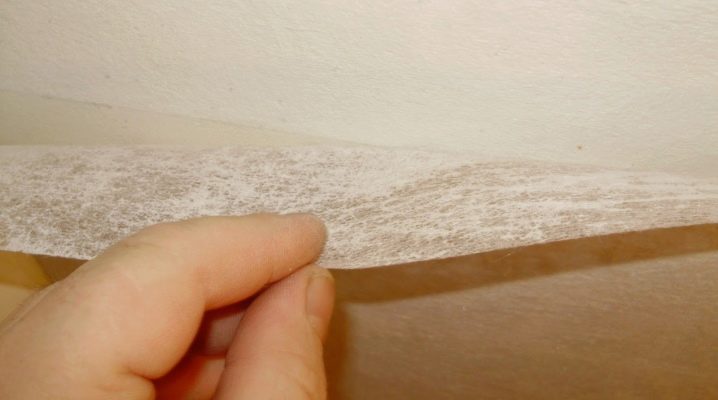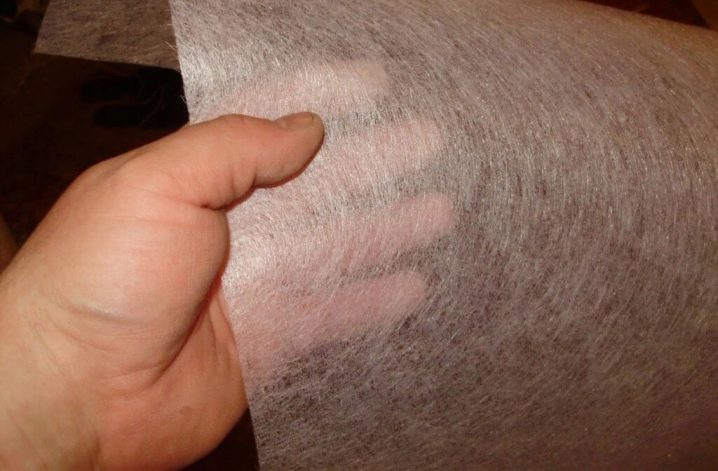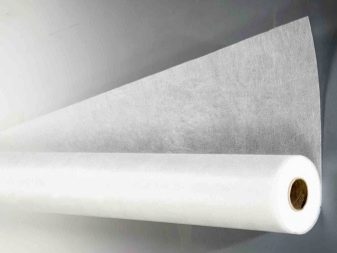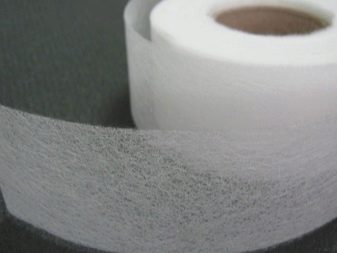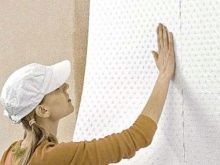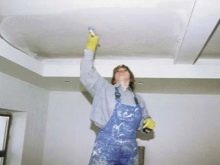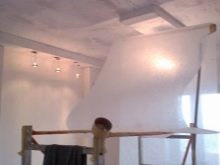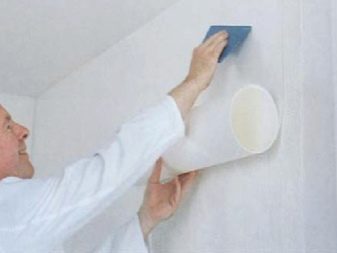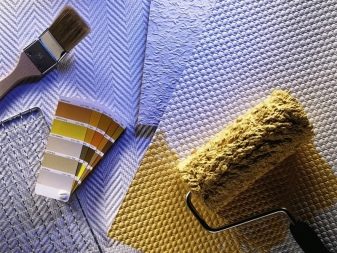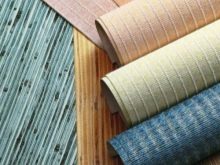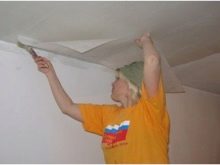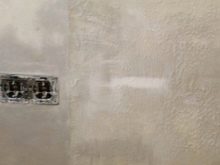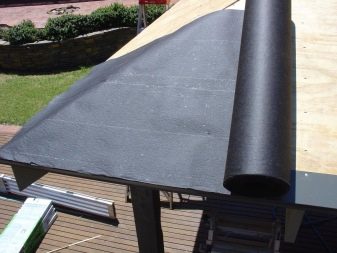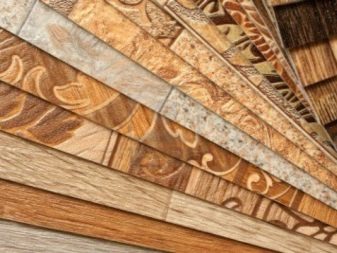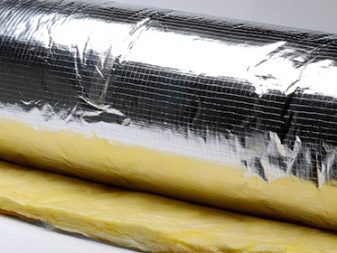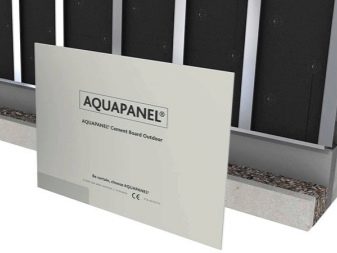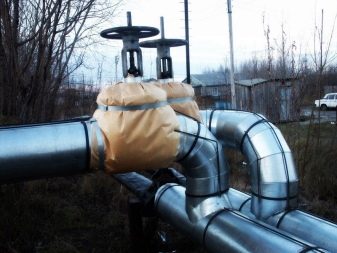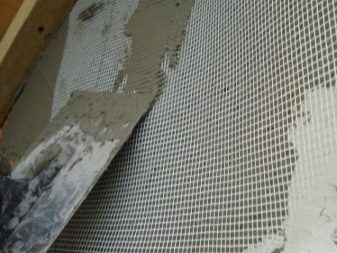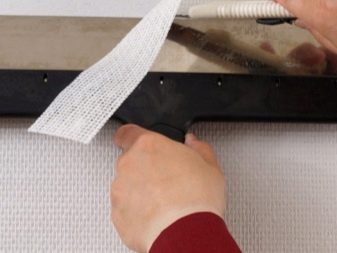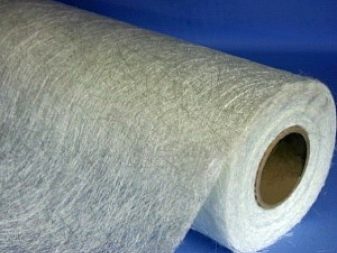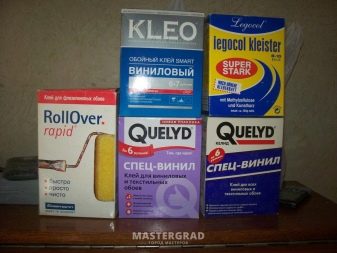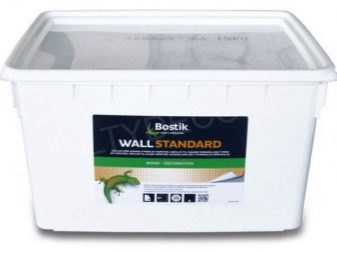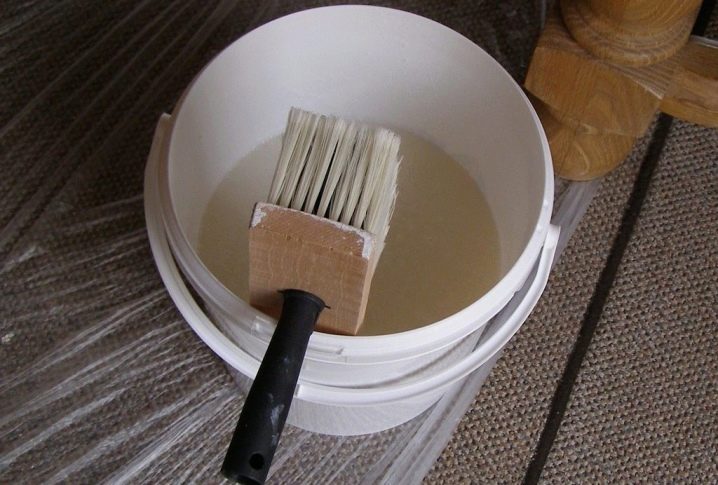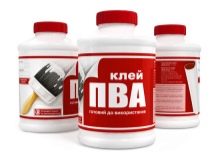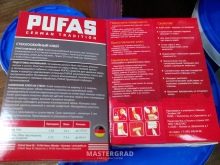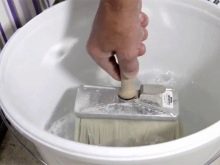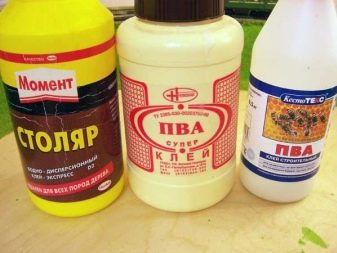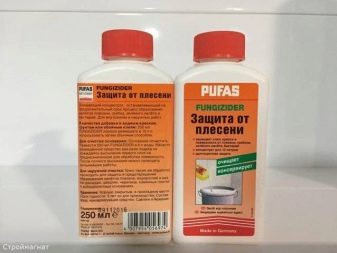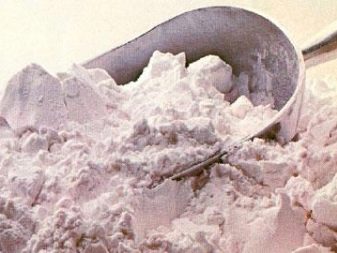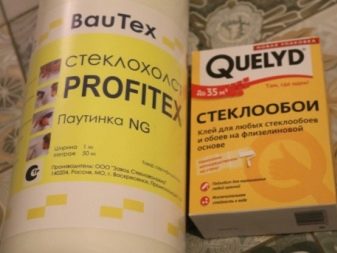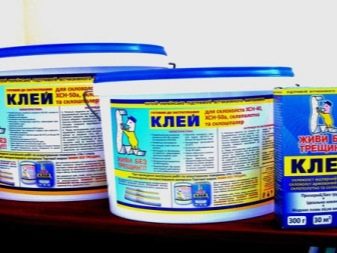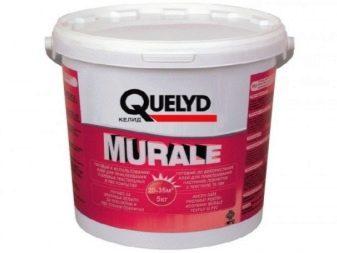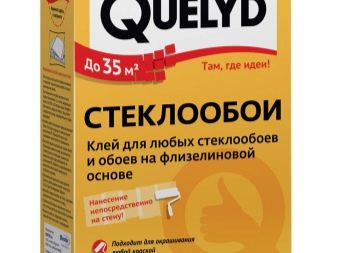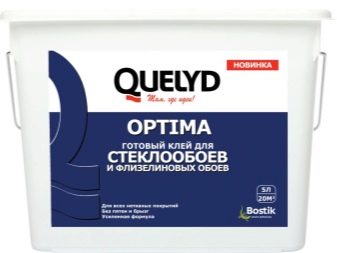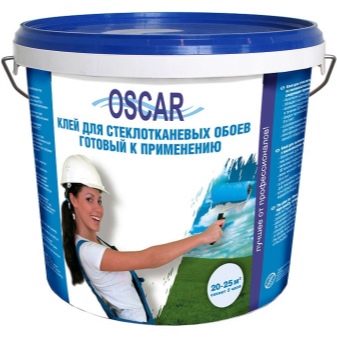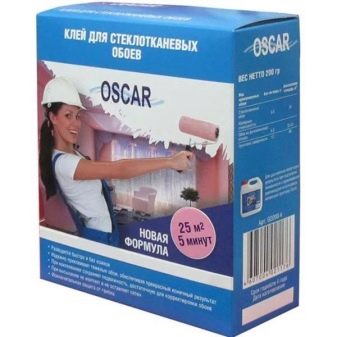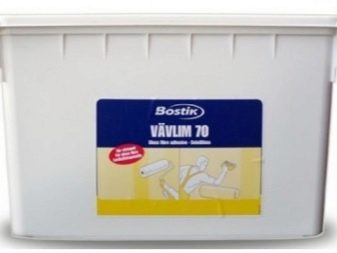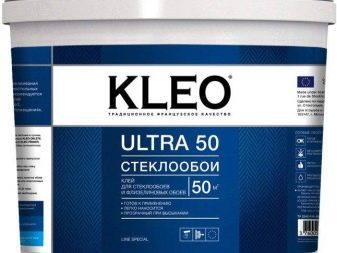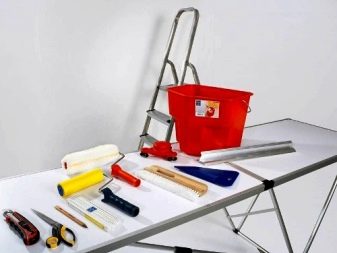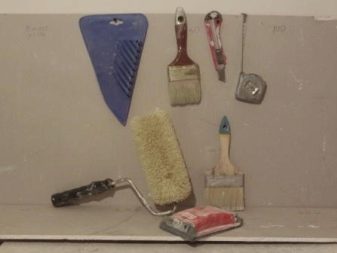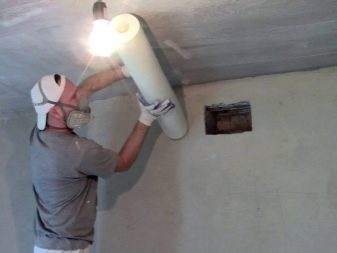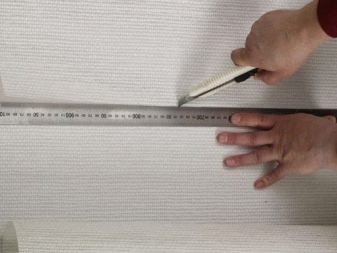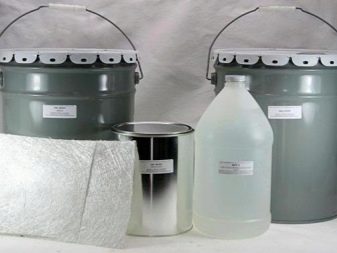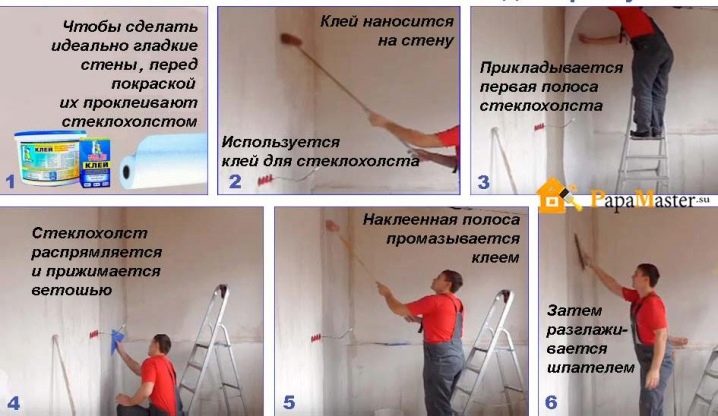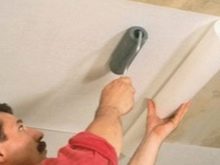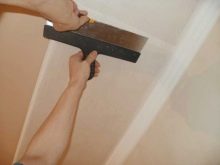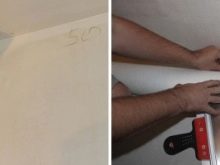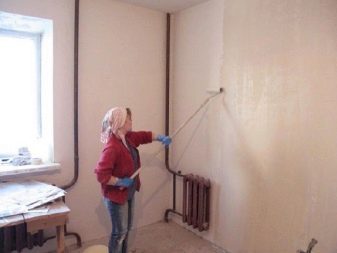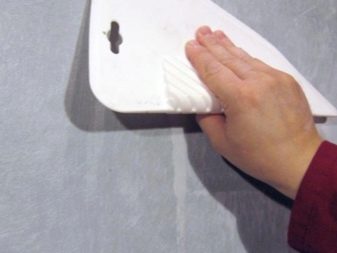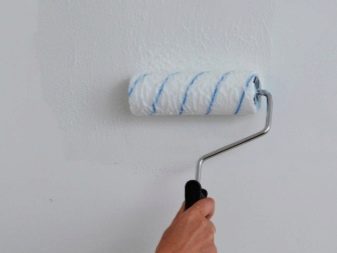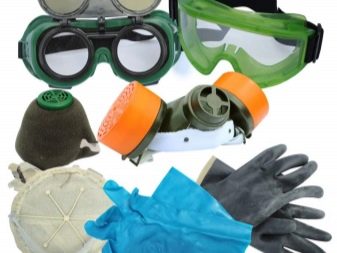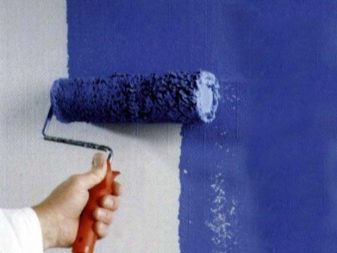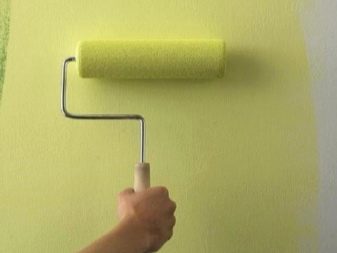How to glue fiberglass: the choice of glue and features of the technology of gluing
Currently, fiberglass is rightfully recognized as one of the most popular and sought-after materials, as it is environmentally friendly and durable. He is able to transform any surface beyond recognition. In addition, such products are endowed with a mass of advantages, which did not go unnoticed by the Russian buyer.
What it is?
Fiberglass is a practical, environmentally friendly and durable finishing material of the new generation, which enjoys an enviable popularity and occupies not the last place in the market of facing coatings. Externally, fiberglass is a fairly dense and wear-resistant material, which is made on the basis of specially treated fiberglass.This unusual material is used for both interior and exterior decoration of buildings.
Advantages and disadvantages
Fiberglass, like all finishing materials, has weak and strong qualities.
For a start, you should pay attention to the benefits that such an unusual coating can boast.
- Fiberglass recognized as environmentally friendly and safe coating. It does not harm the health of the household, as it contains no harmful and dangerous compounds.
- This material boasts heat resistance.
- Fiberglass is not afraid of moisture and moisture. In addition, it does not lose its properties in terms of temperature jumps.
- Static electricity does not accumulate on the surface of such a finish, and therefore dust does not accumulate.
- Glass fiber, as well as glue for them, do not provoke allergic reactions.
- Does not emit unpleasant and sharp odors.
- It is acceptable to use it for both internal and external works.
- Such material is not subject to corrosion.
- The product is fireproof.
- Such finishing materials are characterized by a long service life.
- They are not afraid of mechanical damage.
- Fiberglass is a fairly durable material.
- Such products are characterized by vapor permeability, so they are not susceptible to the formation of fungi and mold.
- This finish will not require complex and regular care.
- Glass fiber allows repeated staining (up to 10-15 times).
- Such compositions can be safely applied to a variety of bases: concrete, wood and other coatings. They can be not only walls, but also ceilings.
Disadvantages of this finishing material is also a lot.
- In modern stores you can easily stumble upon cheap and low-quality fiberglass. This composition will be too brittle and inelastic. It is very inconvenient to work with similar products, and they do not last long.
- There is a special first grade fiberglass. If there is a need to purchase it, then it should be noted that formaldehyde resins and phenols are present in the composition of such a product. Because of this content, first-class fiberglass can not be used for finishing premises.
- Fiberglass is not able to hide many base defects. For example, this material will not be able to cope with cracks and potholes, so they will have to be repaired in other ways.
- Dismantling fiberglass can not be called simple and fast.
- For such material in the process of finishing is characterized by high consumption.
Material properties and scope
Such practical material as fiberglass is used in two areas:
- in the production of building materials;
- when performing finishing work.
The cost of the product itself depends on the application.
In the production of fiberglass is used for the following types of work:
- creating roll-type roofing materials;
- production of linoleum flooring;
- production of modern aquapanels;
- the creation of materials intended for waterproofing;
- creation of foam glass;
- manufacture of glass wool;
- making special molds;
- production of special parts of drainage systems;
- manufacturing of printed circuit boards.
As for finishing work, in this area fiberglass can be used for the following purposes.
- It is used in waterproofing and anti-corrosion work with the pipeline. At such processing fiberglass is combined with different types of bitumen and mastics.
- Fiberglass is often used in interior decoration of buildings - it can be used as a base for painting, wallpaper or a fixer for drywall or panels (eg MDF) on walls and ceilings.
Fiberglass forms a special reinforcing layer on the surface of the base. In addition, this finishing material protects the decorative coating from the appearance of cracks and other similar defects.
The reverse side of the fiberglass is outside the roll. The front half of such material is ideally smooth, and the bottom - fleecy and rough.
As a rule, fiberglass "cobweb" is used as a basis for future decoration. As a topcoat it is not used. But we must bear in mind that it is forbidden to apply such material on plastered bases, since the glass canvas and plaster have a different structure.
If you stick a “cobweb” on the plastered surface, it can become covered with bubbles even in the case when the finishing is done by an experienced master.
Glue selection
For fiberglass, you must select the appropriate glue. Below are the requirements that apply to such adhesive mixtures, and firms producing similar products.
Types of mixtures
For applying fiberglass used two types of adhesive mixtures:
- dry;
- ready.
Finished products do not need to be prepared in advance - they are initially ready for use. However, choosing such an adhesive solution, it is necessary to pay attention to its shelf life. As a rule, it is indicated on the container in which the glue is located. It is worth considering that an overdue product may cause a lot of inconvenience in the pasting process, for example, start to bubble and peel off.
If the bucket is already open, the glue is recommended to put in the case as soon as possible. You should always measure the amount of adhesive composition with the planned production of funds. For this useful knowledge of the rate of consumption of the adhesive mixture, which is indicated on the packaging.
Dry mixes are good because they can be prepared in the quantities that are needed at the moment. To work such compositions should be prepared, strictly adhering to the instructions. The recipes for these adhesive mixtures are of the same type, however, there are variations with some nuances that must be observed.
Many consumers are wonderingIs it possible to install fiberglass on the popular PVA glue? According to experts, this composition is permissible to use when working with such finishing materials.
However, it is worth considering one important point: the glued canvas of low density will let the sun rays through itself, due to which the glue may turn yellow and spoil the color of the decorative coating.
Composition requirements
The composition of high-quality adhesive solution for fiberglass should contain a number of special components.
- plasticizer - it is this ingredient that makes the adhesive base elastic even after it is completely dry, so no cracks or other damage appear on it;
- polyvinyl acetate is a special polymer that is known to most consumers by the name of PVA, is a universal glue that does not have toxic constituents and is suitable for many different bases;
- fungicidal additives - these components prevent the destruction of bacteria caused during the repair process;
- modified starch;
- bactericidal components.
Sometimes a special glue comes with fiberglass. Such products can be used when finishing a variety of areas: bathroom, kitchen, loggia or balcony, as well as other equally important places.
Popular manufacturers
Currently, there are a large number of large and well-known manufacturers in the market of building and finishing materials, producing high-quality and popular products. Below are the most popular brands that offer modern consumers durable and practical adhesive mixtures for fiberglass.
Quelyd Is a well-known trademark from France that produces high-quality adhesive mixtures that form a universal compound called BluTack. This substance has many functions and allows you to securely adhere to different materials.
The assortment of this major manufacturer contains various types of glue for various wallpapers, as well as sealants, stripping liquids, mastics, bleaching and protective complexes and plaster putties.
The most popular today are adhesive mixtures for glass wall from the line Optimawhich are on sale in plastic container of 15 l and differ in a small expense on 1 sq.m.These types of glue are permissible to use in wet areas. In addition, bactericidal and fungicidal components are present in Quelyd products.
The time of complete drying of such glue is 24-48 hours. Coloring of the finished base can be made after a day. Adhesive composition Quelyd It is permissible to apply both manually (using a roller) and machine.
Famous brand Oskar produces high-quality adhesives (dry and ready) for applying fiberglass. The products of this popular manufacturer are renowned for their performance, low consumption and high gluing capacity.
Many consumers choose glue Oskaras they are safe and harmless - there are no hazardous chemicals in their composition. Branded products meet all sanitary requirements. In addition, adhesive mixtures Oskar prevent the formation of fungus and mold under the decorative coating.
Pufas - This is another popular and large brand from Europe, which has a representative office in Russia. The products of this manufacturer are manufactured using the latest technology. Range Pufas very rich and diverse - it is represented by various types of paint coatings, primer mixtures, as well as adhesives.
Ready adhesive for fiberglass from Pufas is in great demand as it is relatively inexpensive and has excellent adhesive properties. Such products of the German brand are fully prepared for use. As a rule, they contain antifungal components. Also adhesive mixtures for glass fiber from Pufas not afraid of cold and temperature drops.
International network Bostik offers consumers a choice of high-quality adhesive mixtures for working with fiberglass. Many of them include such binding components as PVA and starch. It is recommended to put them on these or other bases with a roller or a special brush. Full strength such mixtures acquire after 7 days.
Glue for fiberglass Bostik It is recommended to apply on the bases in dry rooms. Not only fiberglass can be laid on such coatings, but also various types of fabrics, as well as paper and vinyl wallpapers.
Kleo - This is another well-known manufacturer from France, which produces dry adhesive mixtures for mounting fiberglass.The products of this brand are distinguished by reliability, drying in a short time, democratic cost and ease of preparation at home.
Adhesive mixtures Kleo after drying, remain transparent. They get divorced easily and quickly, without forming hard lumps. There are no hazardous and harmful substances in their content; therefore, such compounds can be safely called absolutely safe for people and animals. In the ready state glue for fiberglass Kleo can be stored for up to 10 days.
Preparation and tools
If it is decided to independently make the pasting of fiberglass on the ceiling or walls, then it is necessary to stock in advance the following tools and materials:
- rolled fiberglass;
- adhesive mixture (it is desirable to purchase a finished product that does not need to be independently prepared for work);
- scaffolding or stepladder;
- paint roller on a long holder;
- different sized tassels;
- glue cuvette;
- a spatula for wallpaper (it is desirable to purchase a plastic version);
- painting knife;
- a cutter;
- protective equipment - glasses, gloves, respirator.
If all of these units are already in stock, then you can start preparing the base.
- First of all, it is necessary to clean the walls and the ceiling in the room from dirt and dust.
- Now you can open the container with the ready adhesive. You do not need to do this in advance, otherwise the mixture can dry out and work with it will be difficult.
- Other objects in the room (floors, doors, window frames) are recommended to be covered with polyethylene film.
- Then you need to make markup for the dimensions of the sheets of canvas on the grounds - for this usually use a pencil or marker.
- After that, the rolls of fiberglass turn inside out. They need to be cut into segments of suitable sizes, based on the markup.
It should be borne in mind that all elements will need to overlap.
Features of the sticking technology
After preparing the bases, you can proceed directly to gluing fiberglass.
It is worth considering that there should be no drafts in the room.
- First, the glue must be properly applied to the wall or ceiling - a roller is suitable for this.
- In the corners and places of elevation differences the glue should be spread with a brush.
- Then it is necessary to make installation of the first piece of fiberglass. In order to not appear ugly bubbles under it, you should walk on the surface with a special spatula for wallpaper.
- The second piece needs to be glued overlapping with a margin of 30-40 cm.
- After that, exactly in the middle of the inlet with a ruler, you need to make a cut with a knife.
- Cut the ribbons off the sides of the notch.
- Similarly, you should do with pasting corners. The first sheet should be bent around the corner to a width of about 40-50 cm, the next one - in the opposite direction.
- An incision is made along the central part of the angle axis. After that, the remnants of fiberglass cleaned.
- Glued surfaces are covered with an additional layer of glue. His extra pieces must be removed with a spatula, which should be held at a right angle. Remnants of glue can be removed with a cloth.
An additional layer of glue in this case is necessary in order not to prime the base. After drying, it improves adhesion of the surface, and also makes the coating more reliable and durable.
Useful recommendations
Fiberglass is a common material that is used in various fields. It is glued on different bases with the help of special adhesive mixtures, the characteristics and composition of which are discussed above.
If you decide to self-apply fiberglass on the walls or ceiling, then you should consider some useful recommendations from professionals,to avoid mistakes.
- Despite the many advantages, the glue "web" has its own weaknesses. For example, if a crack appeared in a place near which there is a seam, then it will still crawl out. Most often, such defects are formed when the fiberglass is glued to the gypsum board. For this reason, experts do not recommend gluing such sheets along the seams of drywall sheets - you should retreat 2-3 cm.
- When sticking it is necessary to pay attention to the position of the front part of the canvas. Most often it is inside the roll. At first glance it may seem that both sides of this material are identical, so it is recommended to carefully study the label of the purchased product.
- Before finishing, walls and ceilings are usually primed. Priming mix will allow to strengthen the bases, and also to reduce a consumption of a paint and varnish covering.
If you need to apply fiberglass on the ceiling, but it is very difficult to remove the previous coating with lime, then you can try to wet it and walk on it with a wool rag several times.
- Always follow the safety instructions during operation.Before you start applying fiberglass, you need to wear gloves, a respirator and a hat. It should also be borne in mind that sharp particles of finishing material can get on the skin, mucous membrane or in the respiratory tract - this can cause severe irritation.
- Fiberglass must be applied on a neat and smooth base. For example, if there are differences in height or any irregularities on a sheet of drywall, then you must first seal them and only then glue the finish.
- If dry glue is bought, it is necessary to prepare it for application, based on the instructions. Most often it is available on the packaging. In the required amount of warm water you need to pour the adhesive powder, and then mix everything. The finished compound should stand for 10-15 minutes to swell. After that glue should be stirred again.
If it is required that the fiberglass dry out as quickly as possible, no need to turn on the heating devices - this can lead to the deformation of the materials and their weak adhesion.
- For dyeing fiberglass need to apply high-quality paintwork exclusively on a water basis, and the paint can be not only normal, but also the facade.
- It is recommended to use a wide trowel for filling glass fiber - it will be much more convenient to work with this tool.
- If necessary, fiberglass can be laid on the slopes in the room.
- According to experts, for fixing fiberglass, as a rule, glue is required in large volumes, so it is better to buy it with a margin.
- It should be noted that working with very large sheets of fiberglass is not very convenient to work, especially when it comes to finishing the ceiling.
- If it is required that the paint on fiberglass had a relief and rough texture, then it is worth covering the base with a leveling layer of putty.
- Both fiberglass and glue need to be bought only in proven stores so as not to run into low-quality products.
On how to glue the cobweb (fiberglass) on the figured ceiling of plasterboard, see the following video.
